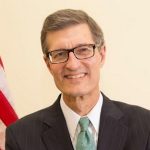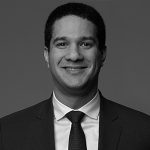 Each December we ask a panel of industry experts to identify the biggest moments in IP for the previous year, and likewise ask them for their wishes for the new year. Having tried many times to do a predictions article (with limited success) I took a different approach this year. Instead of asking for predictions per se, I asked our distinguished panel of industry experts to identify which issue or issues or cases represent a topic to watch during 2018 (and why). Realizing that Oil States is the biggest issue in the patent industry, and in an attempt to get some variety of though, I further told the experts to “feel free to say something other than Oil States, although certainly feel free to mention Oil States.”
Each December we ask a panel of industry experts to identify the biggest moments in IP for the previous year, and likewise ask them for their wishes for the new year. Having tried many times to do a predictions article (with limited success) I took a different approach this year. Instead of asking for predictions per se, I asked our distinguished panel of industry experts to identify which issue or issues or cases represent a topic to watch during 2018 (and why). Realizing that Oil States is the biggest issue in the patent industry, and in an attempt to get some variety of though, I further told the experts to “feel free to say something other than Oil States, although certainly feel free to mention Oil States.”
Following my own advice and anticipating that everyone reading understands the importance of Oil States, the issues I will be watching in 2018 other than Oil States are as follows: (1) What does the new Director of the USPTO do with respect to reforming the PTAB? (2) Will the USPTO adopt a code of judicial ethics for PTAB judges? (3) Will the U.S. drop out of the top 10 countries for patent protection in the annual U.S. Chamber IP Index? (4) How will the Federal Circuit resolve Eleventh Amendment sovereign immunity and the assertion of sovereign immunity by Indian Tribes? (5) Will the Federal Circuit continue its unprecedented disposition of cases without an opinion by relying on Rule 36 summary affirmance? (6) Will Conservative groups become even more vocal advocates of a strong patent system?
Without further ado, here is what the experts say you should be watching in 2018.
 Stephen Kunin
Stephen Kunin
Partner, Oblon, McClelland, Maier & Neustadt, L.L.P.
The topic to watch in 2018 will be the implications of In re Aqua Products on amendment practice in AIA administrative trials, as well as the Supreme Court’s yet to be issued decisions in Oil States and SAS Institute on the Constitutionality of AIA trials and the limits on PTAB discretion in instituting AIA trials on a subset of the petitioner’s bases for challenge and the scope of final written decisions. It is also yet to be determined whether the STRONGER Patents Act of 2017 will move forward resulting in significant changes to the way AIA trials would be conducted. 2018 could be the year when seismic changes could impact AIA trials. Stay tuned.
Stephen Kunin serves as an expert witness and consultant on patent policy, practice and procedure. Mr. Kunin served three decades at the USPTO, including 10 years as Deputy Commissioner for Patent Examination Policy.
 Alden Abbott
Alden Abbott
Heritage Foundation
The important role that patent rights play in incentivizing pharmaceutical innovation does not justify stratagems by holders of expired drug patents to prevent legitimate competition by new generic entrants. Competition sparked by generic producers significantly reduces drug prices.
Incumbent patented brand name drug producers have been credibly accused of delaying post-expiration generic competition by denying prospective competitors access to drug samples and regulatory protocols required for FDA approval of market entry. The proposed Creating and Restoring Equal Access to Equivalent Samples (CREATES) Act addresses these problems by authorizing granting generic drug makers to sue brand name firms that have unreasonably withheld access to samples and prevented generics from participating in safety-based regulatory protocols. Commendably, the current draft of the CREATES Act precludes generic firms from “free riding” on protocols developed by brand name companies, by authorizing the FDA to accept alternative protocols that meet FDA safety requirements.
Given the political attention paid to sky-high drug prices in the context of health care reform, one may expect the CREATES Act to garner substantial attention in 2018.
Alden Abbott serves as Deputy Director of Edwin Meese III Center for Legal and Judicial Studies at The Heritage Foundation.
 Dyan Finguerra-DuCharme
Dyan Finguerra-DuCharme
Partner, Pryor Cashman
In September 2017, following a jury trial on damages, U.S. District Judge Laura Taylor Swain of the Southern District of New York ruled that Tiffany and Company is entitled to $11.1 million in trebled profits, plus interest, in addition to $8.25 million in punitive damages. Overall, Costco owes the luxury jewelry retailer more than $19.3 million for its use of the TIFFANY mark in connection with the sale and promotion of generic diamond engagement rings.
At trial, Costco argued that the three-pronged setting used in the rings is commonly known as the “Tiffany setting,” and that it used the verbiage in a generic manner and was not holding the rings out as authentic TIFFANY items. Costco further argued that the rings were not stamped or marked with the TIFFANY mark, nor sold in the distinctive blue box or bag. The judge rejected these arguments and determined that the wholesale giant was willfully selling “counterfeit” rings, subjecting it to enhanced liability.
Costco’s appeal to the Second Circuit will be closely watched by trademark practitioners for several reasons. First, the ruling is important for the case law on genericness, a legal principle that has been the death knell of trademarks like kerosene, linoleum and yo-yo and is an ongoing battle for brands like Kleenex, Band-Aid and Xerox. Having the Second Circuit set forth the level of proof required for genericness, and whether a famous mark can become generic for just one aspect of its goods, will be instructive.
Second, the case sets parameters for what constitutes a counterfeit product. Do the goods have to be an exact replica, including all markings, or is it sufficient for the mark to be used in connection with products that contain the dominant feature of the senior user’s goods (here, the three-pronged setting)?
With such weighty questions at stake, it is difficult to predict whether the Second Circuit will uphold the lower court’s finding that the goods are counterfeit.
Dyan Finguerra-DuCharme is a partner in Pryor Cashman’s Intellectual Property, Litigation and Media + Entertainment Groups. She has more than 20 years of experience litigating and advising on complex IP matters, and has earned the reputation of go-to lawyer for trademark, trade dress and false advertising disputes.
 James Edwards
James Edwards
CEO, ELITE Strategic Services
Many patent issues could stir in 2018, but two in particular bear watching because their consequences are so significant. They’re pharmaceutical IP versus drug prices and — naturally — Oil States. With biopharmaceutical progress bringing about genomic- and individually-based therapies and even cures that involve increasingly complex science and commercialization challenges, each new chemical or biological entity that makes it through the FDA must fully exploit its patent and regulatory exclusivity to recoup R&D costs and replenish the R&D pipeline. But politicians from President Trump to socialist Sen. Bernie Sanders increasingly decry the price of medical progress. Will the GOP Congress or administration address the price of medicine by making “exclusivity” mean less than it does? Will leftwing pols force nonstatutorily sound “march in” under the Bayh-Dole Act to expropriate federally funded research discoveries whose IP rights were thought to be duly transferred to a risk- and cost-bearing private-sector entity years before? The future of high-risk, high-reward, high-value inventions like new medical innovations and the patent-centric business model hangs in the balance. Which brings up Oil States. The Supreme Court may weasel out by deciding Oil States upon a narrow administrative law basis that leaves PTAB intact. But that would undermine the private property rights basis of our patent system. Remember, the U.S. government now advances a dangerous expansion of “public rights” that has never applied to U.S. patents. The court may ignore two centuries of consistently regarding rights in one’s inventions that patents secure are private property no less than property in land. Then, this wrong turn on IP will darken the future of patent-based commercialization for the most consequential inventions.
James Edwards consults on intellectual property, health care innovation, and regulatory and policy issues. Among other clients, Edwards advises the nonprofit group Eagle Forum on patent policy and is Co-Director of the Inventor’s Project.
 Melissa Brand
Melissa Brand
Director of IP Policy at BIO
One issue I will be following next year is whether the Federal Circuit will endorse the PTAB’s use of a standard for indefiniteness that differs from the one the Supreme Court mandated federal courts apply, and how the Federal Circuit’s decision either way will impact post-issuance reviews at the PTAB. The PTO intervened in an appeal from a post-grant review, Tinnus Enterprises, LLC v. Telebrands Corp., CAFC No. 17-1726, for the “limited purpose” of urging the court to hold that the PTAB can apply a lower standard for finding claims proven indefinite. Because the Federal Circuit had previously approved of this easier-to-find-indefinite standard during ex parte examination, the argument goes, the Federal Circuit should bless the PTAB’s application of that standard to issued patent claims in post-grant reviews.
I find this inquiry to not be of limited purpose. Yes, the PTAB is allowed to construe claims, a legal inquiry, using a standard that differs from the one used by federal courts. But claim construction is not a statutory animal – it is the interpretation of a written instrument. Indefiniteness, on the other hand, is a statutory requirement for patentability and ultimately a question of law. If 35 USC 112(b) means something different to the PTAB in post-grant reviews than it does to federal courts, then why not let the PTAB adopt its own easier-to-find-obvious standard for 35 USC 103 or maybe an easier-to-find-not-enabled standard for 35 USC 112(a)—both questions of law concerning compliance with statutory patentability requirements. There is of course no indication in the AIA that such a result was intended, and it’s hard to imagine how such a result would be desirable, but unfortunately, I am not sure that will end the inquiry.
Melissa Brand is Associate Counsel and Director of Intellectual Property Policy at the Biotechnology Innovation Organization (BIO).
 Erik Oliver
Erik Oliver
Partner, Richardson Oliver Law Group
We think patent licensing for standards will be heat up even further in 2018. Briefly looking backwards, 2017 brought significant developments to Europe around SEP and FRAND licensing: the Unwired Planet decision combined with the December guidelines that just issued on licensing and litigating SEPs. The ripples from those events are starting to be felt.
We expect more discussions, licensing, and perhaps even the first patent fights around the new HEVC video compression standard in 2018. This will push SEP licensing issues further to the forefront. Briefly, HEVC is a new approach to video compression that aims to supplant the current AVC compression format. The licensing complexity comes from the existence of three patent pools together with a number of unaffiliated companies all looking to license potential adopters. This complex licensing landscape is difficult and expensive for potential adopters of the standard to navigate.
We expect the patent fights on HEVC licensing to further develop practices around key issues for SEP licensing and FRAND determinations: the linkage between the requested fees and the value of the technology; handling royalty stacking; providing more clarity on essentiality; and ensuring fees that respect proportionality across multiple licensors. For anyone looking to adopt HEVC it is crucial that your plan includes a budget for paying license fees, zero is not going to be an option without a significant fight.
Mr. Oliver counsels clients on a variety of patent and business matters, including licensing, buying, selling, valuation, prosecution and business processes. Prior to founding the ROL Group, Mr. Oliver was a Vice President at ThinkFire Services USA, Ltd’s Silicon Valley office.
 Rob Sterne
Rob Sterne
Sterne, Kessler, Goldstein & Fox P.L.L.C.
In addition to the US, EU and China, India will be interesting to watch in 2018 and beyond. With a market of over 1 billion people and a large number of English language speakers, expect India to strengthen its own patent system as it realizes the importance of solid and predictable IP protection to boost Indian industry on the world stage.
The ability to produce a predictable ROI from an IP investment will continue to be difficult. It will continue to require a deep understanding of what is really happening and what can reasonably be expected in each of the major IP jurisdictions. One should not and cannot rely of the rules of the road from the past to make accurate and relatively certain ROI predictions.
Robert Greene Sterne is a founding director of Sterne Kessler Goldstein & Fox. Sterne has been recognized by Law360 as one of the “Top 25 Icons of IP,” and among the country’s “IP Trailblazers & Pioneers 2014” by the National Law Journal.


 Ben Natter (left)
Ben Natter (left)
Jess Sblendorio (Center)
Alexander Callo (right)
Haug Partners LLP
Two recent decisions, one by the Sixth Circuit and another from the Western District of Kentucky, have addressed the fleeting use of another’s trademark and whether the fair use defense applies to defeat a trademark infringement claim. In Oaklawn Jockey Club, Inc. v. Kentucky Downs, LLC, the Sixth Circuit affirmed the district court’s grant of the a motion to dismiss, finding that there was no trademark use. In the alternative, if there was a trademark use, the court held that Defendants were entitled to assert a defense of fair use. One of the Defendants, at the time named Encore Gaming, developed an historical horse-race gambling platform, and as part of the video creation of the historical races, showed identifying information about the racing venue and briefly displayed the marks of these venues. This brief display was the basis for Plaintiff’s trademark infringement claims. Affirming the dismissal by the district court, the Sixth Circuit agreed that there was no trademark use here, and thus the court did not even need to reach the question of whether the fair use defense applied. Although this was not a precedential decision, this case was cited to in a subsequent case in the Western District of Kentucky that dealt with a similar issue.
The second case, The Sporting Times LLC v. Orion Pictures et al., granted a motion to dismiss the trademark infringement claims. The issue in this case was the use of Defendant’s mark in conjunction with the film Spaceman, which was released in August 2016 and featured the story of former baseball pitcher Bill “Spaceman” Lee. The beginning montage of the film and the trailer of the film each featured a collection of news articles about Bill Lee and displayed “The Sporting Times” in these clips, at nine second and two seconds respectively—the image was not an actual copy of Plaintiffs’ publication, which did not exist until 2004. The Defendants removed the material from the film and trailer, but the Plaintiffs asserted that the material was still publicly available. Again, as part of its reasoning in granting the motion to dismiss, the court found that there was also no trademark use in this case by Defendants. While both of these decisions stem from cases in the Western District of Kentucky, the reasoning regarding the issue of whether the use of a trademark is fleeting, or if a fair use defense may be applied when there is use in similar cases, may be used in other cases as a defense to a trademark infringement claim under the Lanham Act.
Ben Natter is a partner in the New York office of Haug Partners LLP. Ben’s practice focuses on all aspects of global trademark strategy, procurement, management and enforcement. Jessica Sblendorio is an associate in the New York office of Haug Partners. She focuses her practice on litigation. Alexander Callo is an associate at the New York office of Haug Partners LLP where his practice primarily focuses on pharmaceutical patent litigation under the Hatch-Waxman Act.

![[IPWatchdog Logo]](https://ipwatchdog.com/wp-content/themes/IPWatchdog%20-%202023/assets/images/temp/logo-small@2x.png)

![[[Advertisement]]](https://ipwatchdog.com/wp-content/uploads/2023/01/2021-Patent-Practice-on-Demand-1.png)
![[Advertisement]](https://ipwatchdog.com/wp-content/uploads/2024/04/UnitedLex-May-2-2024-sidebar-700x500-1.jpg)
![[Advertisement]](https://ipwatchdog.com/wp-content/uploads/2024/04/Artificial-Intelligence-2024-REPLAY-sidebar-700x500-corrected.jpg)
![[Advertisement]](https://ipwatchdog.com/wp-content/uploads/2024/04/Patent-Litigation-Masters-2024-sidebar-700x500-1.jpg)

![[Advertisement]](https://ipwatchdog.com/wp-content/uploads/2021/12/WEBINAR-336-x-280-px.png)
![[Advertisement]](https://ipwatchdog.com/wp-content/uploads/2021/12/2021-Patent-Practice-on-Demand-recorded-Feb-2021-336-x-280.jpg)
![[Advertisement]](https://ipwatchdog.com/wp-content/uploads/2021/12/Ad-4-The-Invent-Patent-System™.png)






Join the Discussion
No comments yet.